One of the enduring mysteries of the universe is the nature of matter—what are its basic constituents and how do they interact to form the elements and the properties we observe? The mission of the Nuclear Physics (NP) program is to solve this mystery by discovering, exploring, and understanding all forms of nuclear matter. Nuclear physicists seek to understand not just the familiar forms of matter we see around us, but also exotic forms such as those that existed in the first moments after the Big Bang and that exist today inside neutron stars. The aim is to understand why matter takes on the specific forms now observed in nature and how that knowledge can benefit society in the areas of commerce, medicine, and national security.
The quest to understand the properties of different forms of nuclear matter requires long-term support for both theoretical and experimental research efforts. Theoretical approaches are based on calculations of the interactions of quarks and gluons, which form protons and neutrons, using today’s most advanced computers. Other theoretical research models the forces between protons and neutrons and seeks to understand and predict the structure of nuclear matter. Experiments in nuclear physics use large accelerators that collide particles up to nearly the speed of light to study the structure of nuclei, nuclear astrophysics and to produce short-lived forms of matter for investigation. Nuclear physicists also use low-energy, precision nuclear experiments, many enabled by new quantum sensors, to search for a deeper understanding of fundamental symmetries and nuclear interactions. Comparing experimental observations and theoretical predictions tests the limits of our understanding of nuclear matter and suggests new directions for experimental and theoretical research.
Highly trained scientists who conceive, plan, execute, and interpret transformative experiments are at the heart of the NP program. NP supports these university and national laboratory scientists. We also support U.S. participation in select international collaborations and provide over 90 percent of the nuclear science research funding in the United States. The world-class scientific user facilities and associated instrumentation necessary to advance the U.S. nuclear science program are large and complex. NP supports four scientific user facilities: the Relativistic Heavy Ion Collider (RHIC) at Brookhaven National Laboratory (BNL); the Continuous Electron Beam Accelerator Facility (CEBAF) at Thomas Jefferson National Accelerator Facility (TJNAF); the Argonne Tandem Linac Accelerator System (ATLAS) at Argonne National Laboratory (ANL); and currently under construction the Facility for Rare Isotope Beams (FRIB) which will provide unprecedented opportunities to study the synthesis of the heavy elements in the cosmos. Each of these facilities has unique capabilities that advance NP’s scientific mission.
NP Areas
NP Science Highlights
-
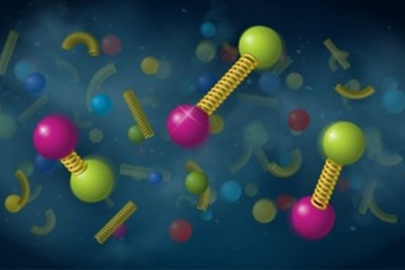 New measurements at RHIC provide evidence for quark ‘deconfinement’ and insight into the unimaginable temperature of the hottest matter on Earth.
New measurements at RHIC provide evidence for quark ‘deconfinement’ and insight into the unimaginable temperature of the hottest matter on Earth. -
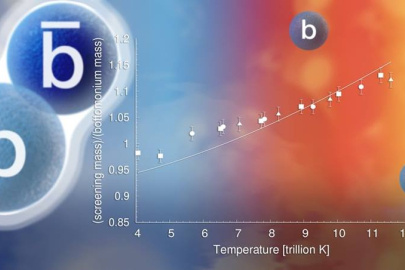 Calculations predict the temperature at which bottomonium melts in the hot matter created in heavy ion collisions.
Calculations predict the temperature at which bottomonium melts in the hot matter created in heavy ion collisions. -
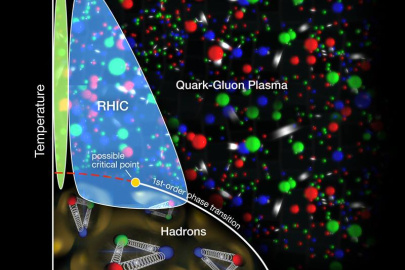 Data on protons emitted from wide range of gold-gold collision energies shows absence of a quark-gluon plasma (QGP) at the lowest energy.
Data on protons emitted from wide range of gold-gold collision energies shows absence of a quark-gluon plasma (QGP) at the lowest energy. -
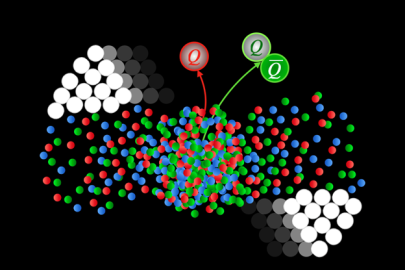 Researchers have resolved a longstanding puzzle in theoretical calculations for heavy ion and electron-ion collision experiments.
Researchers have resolved a longstanding puzzle in theoretical calculations for heavy ion and electron-ion collision experiments. -
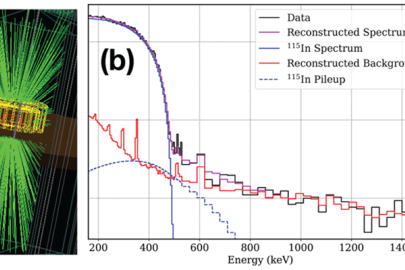 Scientists test nuclear theory models in mid-sized nuclei using high resolution Indium-115 decay data.
Scientists test nuclear theory models in mid-sized nuclei using high resolution Indium-115 decay data. -
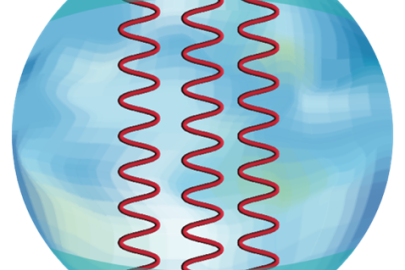 Modeling nuclear matter in two dimensions greatly simplifies understanding interactions among “cold,” dense quarks—including in neutron stars.
Modeling nuclear matter in two dimensions greatly simplifies understanding interactions among “cold,” dense quarks—including in neutron stars. -
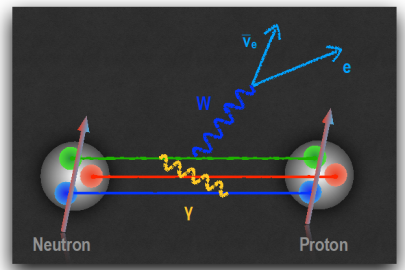 Theorists find new electromagnetic effects that shift the spin-dependent coupling of the nucleon to the weak force and point out the implications for new physics in beta decay.
Theorists find new electromagnetic effects that shift the spin-dependent coupling of the nucleon to the weak force and point out the implications for new physics in beta decay. -
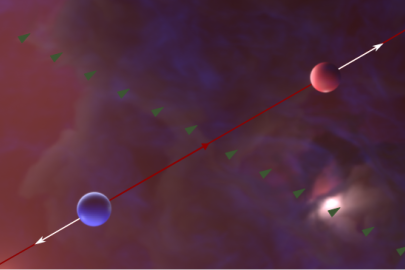 New calculations provide insights into the dynamics of the chiral magnetic effect in heavy ion collisions.
New calculations provide insights into the dynamics of the chiral magnetic effect in heavy ion collisions. -
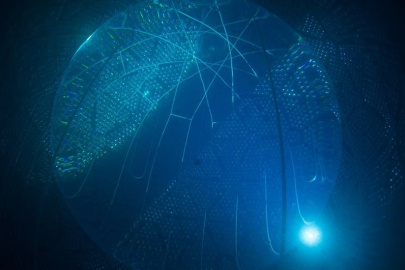 The SNO+ experiment has for the first time shown that neutrinos from a nuclear reactor over 240 km away can be detected with plain water.
The SNO+ experiment has for the first time shown that neutrinos from a nuclear reactor over 240 km away can be detected with plain water. -
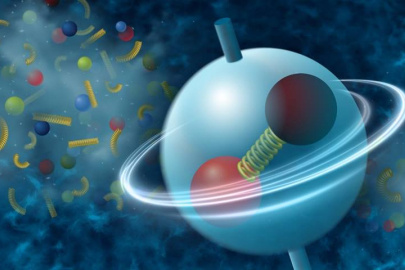 Spin orientation preference may point to a previously unknown influence of the strong nuclear force—and a way to measure its local fluctuations.
Spin orientation preference may point to a previously unknown influence of the strong nuclear force—and a way to measure its local fluctuations.
NP Program News
NP Research Resources
Contact Information
Nuclear Physics
U.S. Department of Energy
Germantown Building
1000 Independence Avenue., SW
Washington, DC 20585
P: (301) 903 - 3613
F: (301) 903 - 3833
E: sc.np@science.doe.gov

